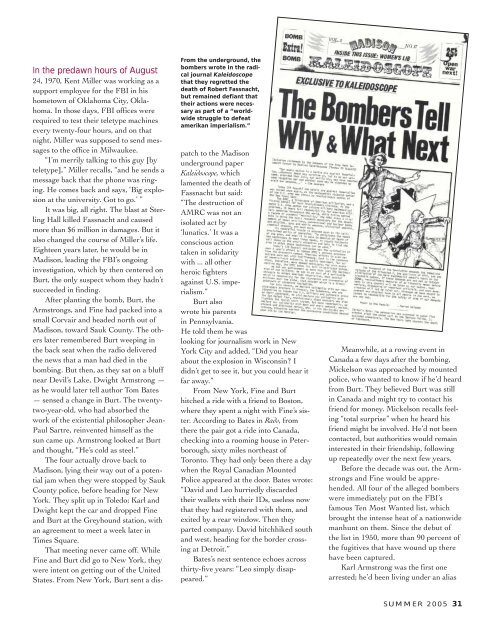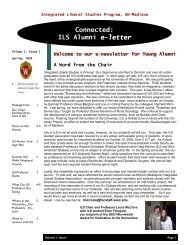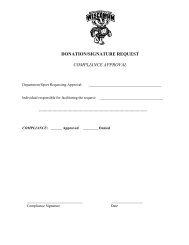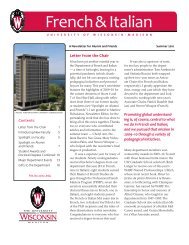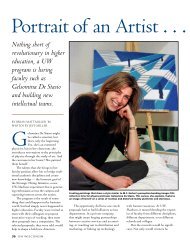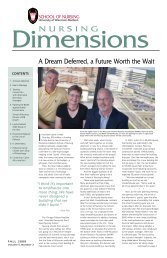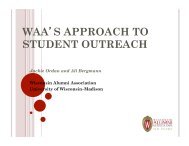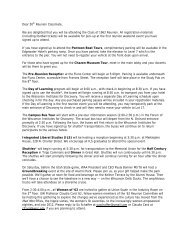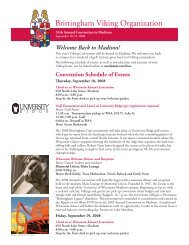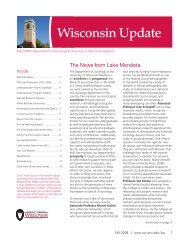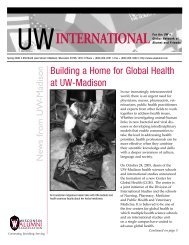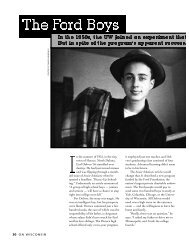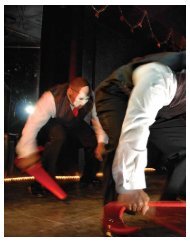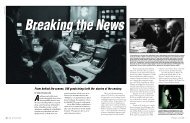The Last Fugitive (pdf file) - Wisconsin Alumni Association
The Last Fugitive (pdf file) - Wisconsin Alumni Association
The Last Fugitive (pdf file) - Wisconsin Alumni Association
You also want an ePaper? Increase the reach of your titles
YUMPU automatically turns print PDFs into web optimized ePapers that Google loves.
From the underground, thebombers wrote in the radicaljournal Kaleidoscopethat they regretted thedeath of Robert Fassnacht,but remained defiant thattheir actions were necessaryas part of a “worldwidestruggle to defeatamerikan imperialism.”In the predawn hours of August24, 1970, Kent Miller was working as asupport employee for the FBI in hishometown of Oklahoma City, Oklahoma.In those days, FBI offices wererequired to test their teletype machinesevery twenty-four hours, and on thatnight, Miller was supposed to send messagesto the office in Milwaukee.“I’m merrily talking to this guy [byteletype],” Miller recalls, “and he sends amessage back that the phone was ringing.He comes back and says, ‘Big explosionat the university. Got to go.’ ”It was big, all right. <strong>The</strong> blast at SterlingHall killed Fassnacht and causedmore than $6 million in damages. But italso changed the course of Miller’s life.Eighteen years later, he would be inMadison, leading the FBI’s ongoinginvestigation, which by then centered onBurt, the only suspect whom they hadn’tsucceeded in finding.After planting the bomb, Burt, theArmstrongs, and Fine had packed into asmall Corvair and headed north out ofMadison, toward Sauk County. <strong>The</strong> otherslater remembered Burt weeping inthe back seat when the radio deliveredthe news that a man had died in thebombing. But then, as they sat on a bluffnear Devil’s Lake, Dwight Armstrong —as he would later tell author Tom Bates— sensed a change in Burt. <strong>The</strong> twentytwo-year-old,who had absorbed thework of the existential philosopher Jean-Paul Sartre, reinvented himself as thesun came up. Armstrong looked at Burtand thought, “He’s cold as steel.”<strong>The</strong> four actually drove back toMadison, lying their way out of a potentialjam when they were stopped by SaukCounty police, before heading for NewYork. <strong>The</strong>y split up in Toledo; Karl andDwight kept the car and dropped Fineand Burt at the Greyhound station, withan agreement to meet a week later inTimes Square.That meeting never came off. WhileFine and Burt did go to New York, theywere intent on getting out of the UnitedStates. From New York, Burt sent a dispatchto the Madisonunderground paperKaleidoscope, whichlamented the death ofFassnacht but said:“<strong>The</strong> destruction ofAMRC was not anisolated act by‘lunatics.’ It was aconscious actiontaken in solidaritywith ... all otherheroic fightersagainst U.S. imperialism.”Burt alsowrote his parentsin Pennsylvania.He told them he waslooking for journalism work in NewYork City and added, “Did you hearabout the explosion in <strong>Wisconsin</strong>? Ididn’t get to see it, but you could hear itfar away.”From New York, Fine and Burthitched a ride with a friend to Boston,where they spent a night with Fine’s sister.According to Bates in Rads, fromthere the pair got a ride into Canada,checking into a rooming house in Peterborough,sixty miles northeast ofToronto. <strong>The</strong>y had only been there a daywhen the Royal Canadian MountedPolice appeared at the door. Bates wrote:“David and Leo hurriedly discardedtheir wallets with their IDs, useless nowthat they had registered with them, andexited by a rear window. <strong>The</strong>n theyparted company. David hitchhiked southand west, heading for the border crossingat Detroit.”Bates’s next sentence echoes acrossthirty-five years: “Leo simply disappeared.”Meanwhile, at a rowing event inCanada a few days after the bombing,Mickelson was approached by mountedpolice, who wanted to know if he’d heardfrom Burt. <strong>The</strong>y believed Burt was stillin Canada and might try to contact hisfriend for money. Mickelson recalls feeling“total surprise” when he heard hisfriend might be involved. He’d not beencontacted, but authorities would remaininterested in their friendship, followingup repeatedly over the next few years.Before the decade was out, the Armstrongsand Fine would be apprehended.All four of the alleged bomberswere immediately put on the FBI’sfamous Ten Most Wanted list, whichbrought the intense heat of a nationwidemanhunt on them. Since the debut ofthe list in 1950, more than 90 percent ofthe fugitives that have wound up therehave been captured.Karl Armstrong was the first onearrested; he’d been living under an aliasSUMMER 2005 31


